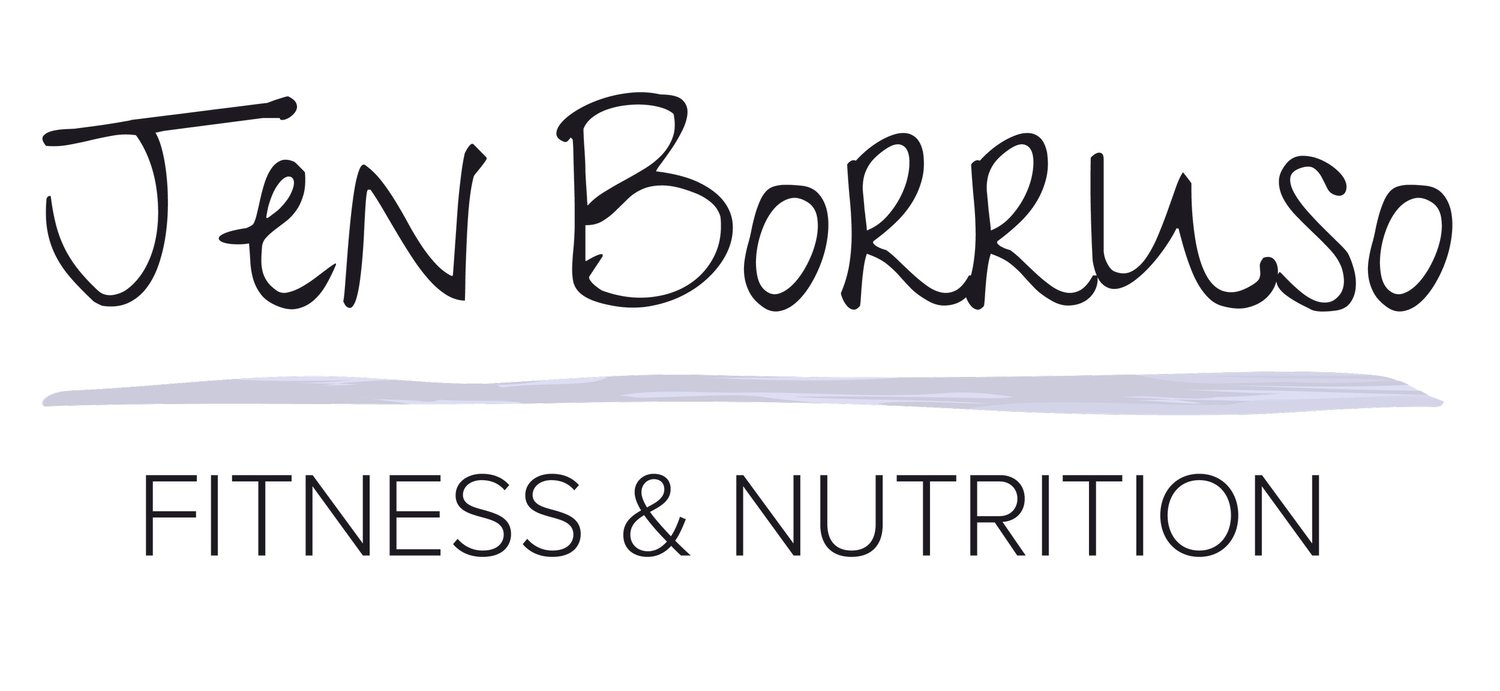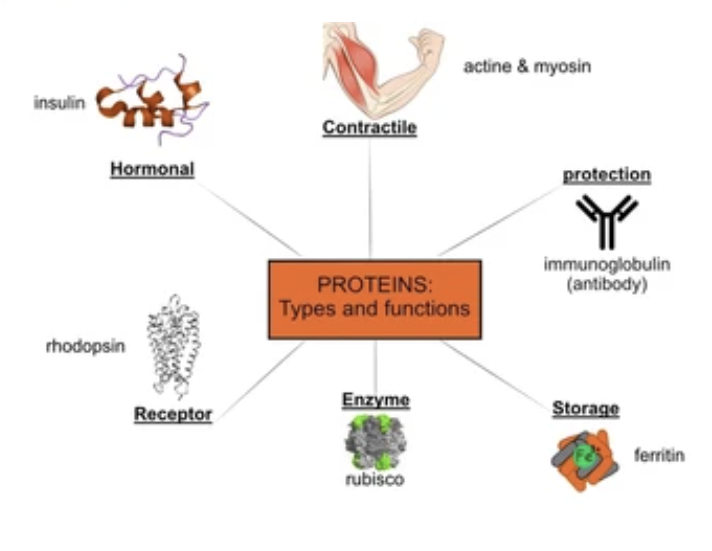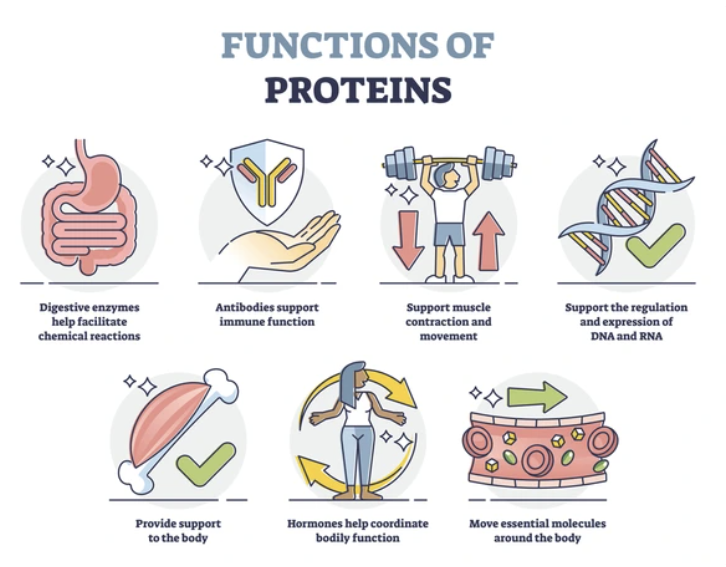The Truth About Protein, Body Fat, and Fear-Based Diet Messages
Why Women Need Protein More Than Ever in Midlife
Every so often, the messaging pops up, claiming that eating too much protein will make you gain fat, “bulk up,” or ruin your body composition. At the same time, it seems like everything has protein added, from Starbucks’ new protein foam to protein bars, cottage cheese in everything, snacks, and even cereals. The mixed messages are confusing and, frankly, misleading.
Here’s the truth: yes, protein for women in midlife is essential, and avoiding it out of fear of gaining fat can actually harm your health.
The Myth That Protein Causes Fat Gain
The idea that eating “too much” protein automatically leads to body fat gain is false. Body fat gain only occurs when we consistently consume more calories than our body needs, whether those calories come from protein, carbohydrates, or fat.
Unfortunately, fear-based messaging often specifically targets women who are concerned about gaining fat, feeding into weight stigma, diet culture, and fatphobia. These narratives distract from the real story: adequate protein intake is critical for women’s health, especially during perimenopause and post-menopause.
What Happens to Protein in the Body
No, eating extra protein does not instantly turn into body fat. Here’s what really happens when you consume protein:
Protein meets immediate needs first: The body uses protein to repair tissues, maintain organs, build and maintain muscle, and produce hormones and enzymes.
Excess protein is processed efficiently: Any protein beyond immediate needs can be converted to glucose or, if total calories are exceeded, stored as fat. This is a gradual metabolic process, not instant.
Calories matter: Even with higher protein intake, if total calories are below or close to your daily energy needs, you will not gain fat. Protein is less efficiently stored as fat compared to carbohydrates or dietary fat.
Temporary water retention: Sometimes higher protein intake can increase water retention in muscles, which may show up on the scale, but this is not fat gain.
Why Protein is Important for Midlife Women
Protein is critical for:
Maintaining muscle mass: Prevents age-related muscle loss that accelerates during perimenopause and post-menopause.
Bone health: Supports bone density and reduces fracture risk as estrogen levels decline.
Metabolic health: Helps regulate blood sugar, supports metabolism, and improves overall vitality.
Energy and recovery: Supports daily activity, exercise recovery, and overall resilience.
Tracking Protein Intake for Women
While I don’t coach intentional weight loss, that doesn’t mean I don’t work with women who choose to track their intake on their own. I just don’t ask them to. Instead, when we work together, the focus is on behaviors that support health and strength, such as making sure you are eating enough protein, particularly if you are strength training.
“Eating enough protein” looks different for everyone. For some, it’s tracking macros in an app; for others, it’s using hand portions, the plate method, or simply ensuring there is a protein source at every main meal. Knowledge of protein-rich foods is often sufficient. This is highly individualized and nuanced, and it’s only relevant for women interested in nutrition coaching.
How Much Protein Do Midlife Women Need?
The standard RDA is 0.8 grams of protein per kilogram of body weight per day (about 0.36 grams per pound). That’s just enough to prevent serious deficiency. In other words, it can keep you from losing too much muscle or having major health problems, but it’s not enough for keeping your muscles strong, your metabolism running well, or your overall health at its best.
Most adults, especially active women in midlife, need more than the minimum to maintain muscle and metabolic health, typically 1.2–1.6 g per kg (≈0.54–0.73 g per lb) of body weight per day, or higher if strength training.
Using lean body mass instead of total body weight is often the most accurate approach, since metabolically active tissue drives protein requirements.
Why protein needs go up after 50
As we age, our bodies become less efficient at using protein to build and maintain muscle, a phenomenon called anabolic resistance. Because of that, we need a bit more protein to get the same muscle-building effect we used to. One major review found that for healthy older adults, diets should provide at least ~1.0-1.2 g protein/kg body weight/day, and more (1.2-1.5 g) for those with illness or higher risk.
It also helps to spread protein throughout the day rather than getting it all in one meal: spreading boosts muscle protein synthesis more effectively.
Protein and Strength Training
If you’re a woman over 50 and lifting weights, getting enough protein becomes even more important.
Fuel for muscle growth: Strength training gives the stimulus, but protein provides the essential amino acids needed for repair and growth. Without enough protein, you won’t see the full benefit of your workouts.
Overcoming anabolic resistance: Research suggests older adults have reduced sensitivity to protein; meaning they need higher intake to maximise muscle protein synthesis.
Evidence in older post-menopausal women: One observational study found that among healthy, older post-menopausal women, those consuming at or above ~0.8 g/kg/day had better physical performance (upper/lower extremity strength, composite performance scores) than those below the RDA.
Leucine matters: The amino acid leucine triggers muscle protein synthesis. In older women, more leucine-rich protein per meal may help overcome that reduced sensitivity.
Bone health bonus: Strength training supports bone density, especially important after menopause when osteoporosis risk increases.
Protein Tips and Meal Ideas
Eating enough protein doesn’t have to be complicated. Here are strategies and ideas to help women in midlife meet their protein needs:
Tips for Getting Enough Protein
Include protein at every main meal: breakfast, lunch, and dinner.
Focus on high-quality protein: eggs, dairy, whey, chicken, fish, lean beef, soy, and legumes.
Spread protein intake across the day to maximize muscle protein synthesis.
Combine with strength training to support muscle and bone health.
Use protein-rich snacks as needed: nuts, seeds, Greek yogurt, cottage cheese, protein shakes, or edamame.
Sample Protein-Rich Meals
Breakfast: Greek yogurt with berries, granola, and chia seeds, or breakfast burritio with avocado and side of fruit
Lunch: Grilled salmon salad with mixed greens, berries, feta, and nuts.
Snack: Cottage cheese with sliced fruit or a small protein smoothie with whey or plant-based protein.
Dinner: Grilled chicken with roasted vegetables and a side of lentils, or tofu stir-fry with brown rice and broccoli.
Practical Tracking Ideas
App tracking: Logging meals in a nutrition app can help ensure protein goals are met.
Hand portions or plate method: A palm-sized portion of protein at each meal is a simple visual guide.
Food knowledge: Simply knowing protein sources and including them at meals is enough for many people.
Consistently including protein at meals and pairing it with strength training can support muscle maintenance, bone health, metabolism, and overall vitality without fear of gaining fat.
Protein Intake is Safe for Healthy Adults
For healthy adults, eating more protein is safe. Even higher intakes do not automatically lead to fat gain. Protein is a building block for your body, not a threat to your body size.
If you have kidney disease or other kidney concerns, protein intake may need to be adjusted, so it is important to discuss your individual needs with a healthcare provider.
Focus on strength, nourishment, and resilience, not fear of fat. Eating enough protein supports your body’s function, energy, and overall health, especially during perimenopause and post-menopause.
Final Thoughts on Protein for Women in Midlife
Eating enough protein is an act of self-care, not something to fear. For women going through perimenopause or post-menopause, adequate protein intake supports muscle maintenance, bone density, metabolism, and overall health. Instead of panicking about protein, focus on giving your body what it needs to thrive, stay strong, and recover efficiently.
REFERENCES
Bauer, J., et al. (2013). Evidence-based recommendations for optimal dietary protein intake in older people: A position paper from the PROT-AGE Study Group. Journal of the American Medical Directors Association, 14(8), 542–559. https://www.jamda.com/article/S1525-8610(13)00326-5/fulltext
Black, K. E. (2024). The impact of protein in post-menopausal women on muscle mass and strength: A narrative review. Nutrition & Health Perspectives, 4(3), 16. https://www.mdpi.com/2673-9488/4/3/16
Deutz, N. E. P., et al. (2014). Protein intake and exercise for optimal muscle function with aging: Recommendations from the ESPEN Expert Group. Clinical Nutrition, 33(6), 929–936. https://pmc.ncbi.nlm.nih.gov/articles/PMC4208946
Gregorio, L., et al. (2014). Adequate dietary protein is associated with better physical performance among post-menopausal women aged 60–90 years. Journal of Nutrition, Health & Aging, 18(2), 155–160. https://pmc.ncbi.nlm.nih.gov/articles/PMC4433492
Paddon-Jones, D., & Rasmussen, B. B. (2009). Dietary protein recommendations and the prevention of sarcopenia. Current Opinion in Clinical Nutrition & Metabolic Care, 12(1), 86–90. https://pmc.ncbi.nlm.nih.gov/articles/PMC12104658
Phillips, S. M., Chevalier, S., & Leidy, H. J. (2016). Protein "requirements" beyond the RDA: Implications for optimizing health. Applied Physiology, Nutrition, and Metabolism, 41(5), 565–572. https://cdnsciencepub.com/doi/10.1139/apnm-2015-0550









